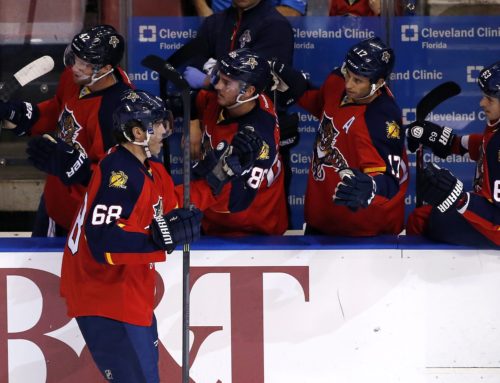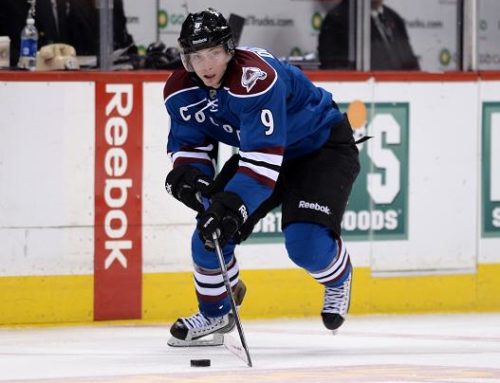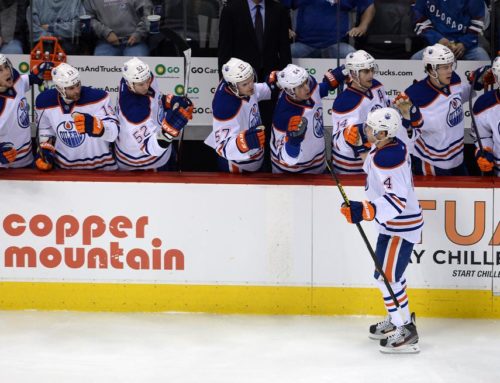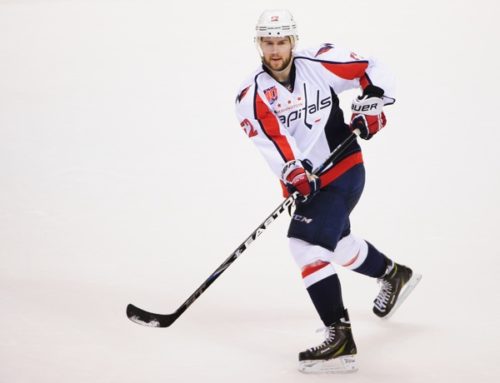
Will Jiri Hudler post another 70+ pt season? Or will he come crashing down to earth? Historical player comps part 5
Matt Cane and Rob Vollman have devised a system to project a player's future performance by finding players with common statistics historically (Vollman, on the left) and in the modern day (Cane, on the right). This article is part of a series to introduce readers to their system, and to demonstrate how it can give you an edge in fantasy hockey.
Jiri Hudler is one of this year's more popular choices for a statistical regression. After all, the 31-year-old Czech jumped from a career high of 25 goals to 31, 37 assists to 45, and 57 points to 76. Can a glance at his modern and historical counterparts help anticipate if his scoring totals will tumble and, if so, how far?
According to the following data, which features Hudler's historical statistical comparables on the left, and the most similar modern players on the right, the range of expected outcomes includes a repeat of last year's incredible performance. However, both systems agree that the most likely outcome is 23 goals, and up to 60 points.

Rob's Take: I may be in the minority, but I'm bullish on Hudler's scoring potential this season. Those are some strong comparable players, on both sides of the table, which suggest a continued ability to threaten 70 points. That includes his closest match and countryman, Patrik Elias, whose scoring totals also leaped from 55 points to 78 at age 32, after which he averaged a 68-point pace (until last year).
"Ah but Rob," you might say (with a smug grin), "all of these historical comparables had achieved much greater success earlier in their careers than Hudler. Their point totals didn't suddenly jump from the 50s to the 70s when they were in their 30s."
I get that. And yes, even prominent members of the hockey analytics community point to modern statistics, like PDO and IPP%, to predict a significant decline this year. For example, TSN's Travis Yost recently pointed out that Hudler was in on roughly 90% of all on-ice scoring, which is Sedin territory, instead of the far more typical rate of 70%.
But in my view, Hudler has shown this potential before. He scored 97 points in the AHL at age 22, was among the KHL's leading scorers at 26, and his 57 points in 1119 minutes with Detroit at age 25 works out to 72 points over last year's 1405 minutes. In short, there is ample historical precedent for Hudler's 76 point season, when you take the time to dig a little further.
As for Yost's argument, it's true that many of the underlying numbers that tend to artificially boost a player's scoring were quite high for Hudler last year – but they weren't career highs. His 16 power-play points was not a career high. His 19.6% shooting percentage was not a career high. The team's 10.8% five-on-five shooting percentage when he was on the ice, was also not a career high.
While he was obviously on the right side of random variation, there's a more simple explanation for Hudler's success last year. Previously, his most frequent linemate in Calgary was Mikael Backlund, and his career 7.9% shooting percentage. In Detroit, he generally played with Valtteri Filppula, although he did get plenty of time with Henrik Zetterberg as well. Last year, Hudler played primarily with Sean Monahan and Johnny Gaudreau, two of the best young snipers in the entire league, with shooting percentages of 16.2% and 14.4%, respectively. You could add up to 20 points to virtually anyone's scoring totals when they go from the likes of Backlund and Filppula to Monahan and Gaudreau!
In the end, I do agree that many things came together just right for Hudler this year, but it wasn't a miracle season that came out of nowhere. If he continues to play on the top scoring line with Monahan and Gaudreau, then there's no reason that he can't threaten 70 points again, just like Elias.
Matt's Take: After finally topping the 70 point mark for the first time at 31 years old, it would be easy to predict a simple regression back to the 50 point range for Jiri Hudler in 2015-2016. But if we dig a little deeper into his historical comparables, we see that there’s a lot of reason to be optimistic that his solid results last year may continue in the coming season.
Hudler’s comparable list are full of players that should be encouraging for both the Calgary Flames and for fantasy owners. Many of them are skaters who had success late into their 30s, with Elias, Roenick and Recchi coming up on the historical side, while Whitney, Langenbruner and Sullivan all provided solid production as they aged. Even going into his age 32 year, there looks to be little risk that father time will catch up to the Czech center anytime soon.
There does exist some danger that the Flames as a whole will fall back down to earth in 2015-2016, as their 97 points last year were well above what a 44.2% Score Adjusted Corsi would suggest is reasonable. Calgary did, however, post the highest penalty differential in the league last year, and if that trend holds up Hudler should get an opportunity to match or improve on his 18 powerplay points from the 2014-2015 campaign.
With all of that being said, there looks to be little risk in selecting Hudler for the coming year. Both systems have a fairly high floor – for a player who’s only been over 50 points roughly half of the time in the last 8 years to have a roughly 40 point worst case scenario is interesting. After making a few significant additions in the offseason, there could still be room to grow for both the Flames and Hudler, and another 70+ point year doesn’t seem out of the question for the Lady Byng trophy winner.
For complete projections on over 700 active NHL players, Vollman and Cane Historical Projections 2015 is available exclusively through the Dobber store for just $4.99 – or it's free if you bought the Fantasy Guide using the coupon code on page 151!





 PHI
PHI ANA
ANA VAN
VAN DET
DET BUF
BUF NYR
NYR MIN
MIN OTT
OTT
